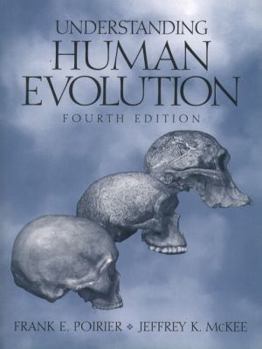Understanding Human Evolution
Select Format
Select Condition 
Book Overview
This book provides a complete, unbiased, relatively non-technical overview and state-of-the-art discussion of the rapidly changing field of paleoanthropology. It features an abundance of illustrations... This description may be from another edition of this product.
Format:Paperback
Language:English
ISBN:0130961523
ISBN13:9780130961525
Release Date:December 1998
Publisher:Prentice Hall
Length:386 Pages
Weight:0.20 lbs.
Dimensions:0.7" x 7.0" x 9.2"
Customer Reviews
2 ratings
good book
Published by Thriftbooks.com User , 14 years ago
I have this book and another one for a class. This book is easy to follow.
Complete, comprehensive and compelling
Published by Thriftbooks.com User , 22 years ago
Poirier and McKee present a wealth of information on the history of human evolution. They outline the methods of dating, identifying and assembling hominid fossils. Dating is shown to be, within the ranges of accuracy, nearly an absolute with today's technology. With the age of the fossil[s] established and the parts identified, the fossil may then be placed in its proper location on the human family tree. Poirier and McKee spend the remainder of the book describing the concepts, controversies and resolutions associated with that final step. The material requires attentive perusal, but the interested reader will be richly rewarded.Early hominid fossils were chronologically located by stratigraphy - the position of the fossil in the rocks in relation to other, known, remnants. The early finds were often located in poorly identified areas, or mistakenly dated for a variety of reasons. Paleoanthropologists of an earlier day lacked the technology available today. Worse, they were often unaware of the need to examine the likely environment of the time the fossil was laid down. As the authors point out, this misunderstanding led to misinterpretation of how evolutionary relationships were structured. Today's "digs" are the subject of multi-discipline effort, with botanists, geologists and other fields represented. The more comprehensive picture laid out by these environment associated with the find allow a firmer footing on our ancestral lineage.While that assertion sounds promising and our heritage is now viewed with confidence, nothing could be further from the truth. Where the human evolutionary tree once looked rather simple, with but a few offshoots extending from the central trunk, the improved accuracy of dating shows many branches. How many of these truly belong on the main branch and how many led to the dead end of extinction is what gives this book its real value.Paleoanthropology has been among the liveliest of sciences. The debates and controversies have left academic halls and achieved public exposure. Poirier and McKee present the contentions of most of the major figures in the field with circumspection and clarity. With each new find, various interpretations arose, researchers attacking and defending positions from various foundations. The authors give each assertion its due, with resolution occasionally based on their own assessment. They have no hesitation in stating their own position, but it's given with justifications. Counter arguments are made with confirming data. Evidence is shown, but not nearly as strongly as the need for new results. This book, in many respects, reads like an academic work, but that in no small part is due to the authors' call for more work in the field.It would be unfair to say that every hominid fossil is given the authors' personal scrutiny, but the impression is proximate. Nearly every major site, with many of the associated prime fossils are described, sometimes with maps and photogr





